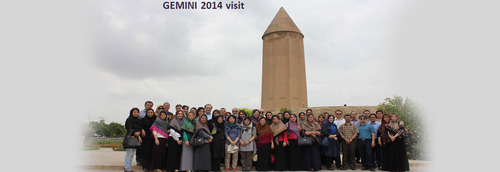The Golestan Cohort Study

The Golestan Cohort Study, which is considered the largest cohort study in the Middle East and North Africa, is a part of the Esophageal Malignancy Study in Northern Iran (GEMINI) and one of the most important medical research projects in Iran
The high prevalence of esophageal cancer in the province of Golestan during the 1970's attracted the attention of many international researchers, and based on this, a team of international scientists in collaboration with researchers from the School of Public Health and Institute of Nutrition from Tehran University of Medical Sciences (TUMS) came together and began their studies in this region of Iran.
This research group was led by Professor Nick Day from the International Agency for Research on Cancer (IARC) where he played a critical role, however, this 8-year research remained incomplete as a result of the political unrests which led to the in Iran.
The reports from the Cancer Registry of the International Agency for Research on Cancer of the The World Health Organization (IARC / WHO) at the time reported the prevalence of esophageal cancer to be 165 cases per 100,000 men and 195 out of 100,000 for women in Northern Iran.
The prevalence of esophageal cancer in Northern Iran is one of the highest for cancer incidence in a given region of the world, and for this reason, the Northeastern region of Iran is globally recognized as one of the regions with the highest incidence of esophagealcancer in worldwide which is frequently noted in medical books.
The efforts of the international research team with Dr. Nick Day’s leadership along with collaborators at the School of Public Health and the and Nutrition Institute of TUMS culminated in a number of case – control and ecological studies, the results of which were eventually published in internationally recognized journals. However, these studies, following political developments which led to the Islamic Revolution in Iran remained incomplete.
During these years researchers were only able to propose a few hypotheses about the possible causes for the high prevalence of esophageal cancer in Northeastern Iran.
Subsequently, in 1997 and 2007 , Dr. Malekzadeh, distinguished professor of Tehran University of Medical Sciences and head of the Digestive Diseases Research Institute at the University, along with a team of 50 experienced researchers in medical sciences from Tehran and Golestan, in collaboration with the International Agency for Research on Cancer of the World Health Organization (IARC / WHO), the US National Cancer Institute (NCI / NIH), the Cancer Research UK Cambridge Institute (CRUK CI), Johns Hopkins University from the US, and Karolinska Institute of Sweden performed the Golestan Cohort Study with the aim of identifying the causes for the high prevalence of esophageal cancer in northeastern Iran on 50,000 individuals between the ages of 40-75 included residents from 333 villages (rural areas) from Gonbad-Kavus, Kalaleh and Agh-Qala, as well as residents from the inner-city areas of Gonbad, who were randomly selected from all five urban areas of the city.
The results of the studies of this research team showed: drinking hot tea, non- potable water, opium consumption, Helicobacter pylori infection, smoking, poor oral and dental health, lack of vegetables and fruits in an individual’s diet, poverty and illiteracy, genetic predisposition and family history are seven risk factors for esophageal cancer.
Given the trends of this study so far, it is anticipated that the follow-up process will continue for up to 30 years.

comment